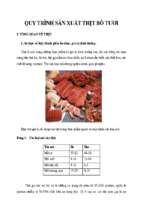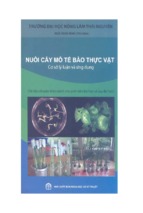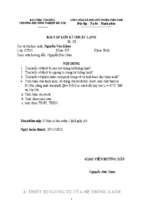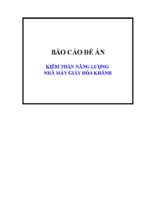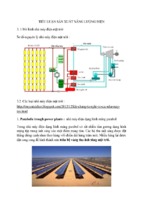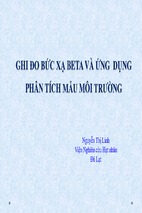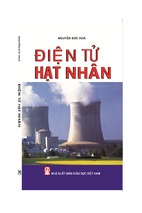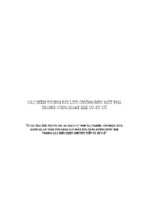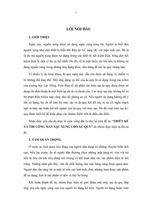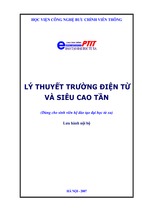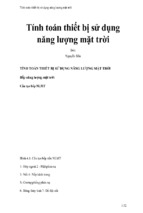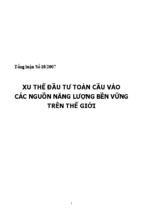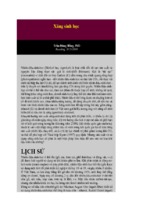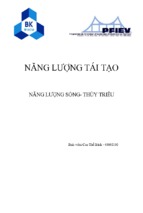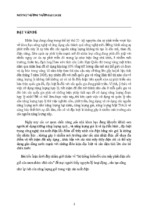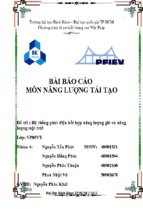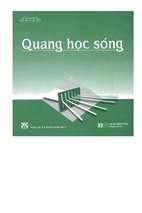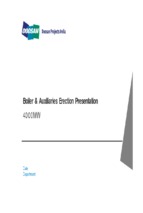Data Analysis for Chemistry
This page intentionally left blank
DATA ANALYSIS FOR CHEMISTRY
An Introductory Guide for Students
and Laboratory Scientists
...........................................
D. Brynn Hibbert
J. Justin Gooding
2006
Oxford University Press, Inc., publishes works that further
Oxford University’s objective of excellence
in research, scholarship, and education.
Oxford New York
Auckland Cape Town Dar es Salaam Hong Kong Karachi
Kuala Lumpur Madrid Melbourne Mexico City Nairobi
New Delhi Shanghai Taipei Toronto
With offices in
Argentina Austria Brazil Chile Czech Republic France Greece
Guatemala Hungary Italy Japan Poland Portugal Singapore
South Korea Switzerland Thailand Turkey Ukraine Vietnam
Copyright ß 2006 by Oxford University Press, Inc.
Published by Oxford University Press, Inc.
198 Madison Avenue, New York, New York 10016
www.oup.com
Oxford is a registered trademark of Oxford University Press
All rights reserved. No part of this publication may be reproduced,
strored in a retrieval system, or transmitted, in any form or by any means,
electronic, mechanical, photocopying, recording, or otherwise,
without the prior permission of Oxford University Press.
Library of Congress Cataloging-in-Publication Data
Hibbert, D. B. (D. Brynn), 1951–
Data analysis for chemistry: an introductory guide for students and laboratory scientists/
D. Brynn Hibbert and J. Justin Gooding.
p. cm.
ISBN-13: 978-0-19-516210-3; 978-0-19-516211-0 (pbk.);
0-19-516210-2; 0-19-516211-0 (pbk.)
1. Chemistry–Statistical Methods. 2. Analysis of variance. I. Gooding, J. Justin
II. Title.
QD39.3.S7H53 2005
5400 .72–dc22
2004031124
9 8 7 6 5 4 3 2 1
Printed in the United States of America
on acid-free paper
This book is dedicated to the legion of students that have passed
through Schools of Chemistry who have tried to unravel the
mysteries of data analysis.
This page intentionally left blank
Preface
The motivation for writing this book came from a number of sources.
Clearly, one was the undergraduate students to whom we teach
analytical chemistry, and who continually struggle with data analysis.
Like scientists across the globe we stress to our students the
importance of including uncertainties with any measurement result,
but for at least one of us (JJG) we stressed this point without clearly
articulating how. Conversations with many other teachers of science
suggested JJG was not the exception but more likely the rule. The
majority of lecturers understood the importance of data analysis but
not always how best to teach it. In our school, like many others it
seems, the local measurement guru has a good grasp of the subject,
but the rest who teach other aspects of chemistry, and really only use
data analysis as a tool in the laboratory class, understand it poorly in
comparison. This is something we felt needed to be rectified, a second
motivation.
In conversation between the pair of us we came to the conclusion
that the problem was partly one of language. In writing this book we
also came to the conclusion that another aspect of the problem was
the uncertainty that arises from any discipline which is still evolving.
Chemical data analysis, with aspects of metrology in chemistry and
chemometrics, is certainly an evolving discipline where new and better
ways of doing things are being developed. So this book tries to make
data analysis simple, a sort of idiot’s guide, by (1) demystifying the
language and (2) wherever possible giving unambiguous ways of doing
things (recipes). To do this we took one expert (DBH) and one idiot
(JJG) and whenever DBH stated what should be done JJG badgered
him with questions such as, ‘‘What do you mean by that?,’’ ‘‘How
exactly does one do that?,’’ ‘‘Can’t you be more definite?,’’ ‘‘What is
a rule of thumb we can give the reader?’’ The end result is the compromise between one who wants essentially recipes on how to perform
different aspects of data analysis and one who feels the need to give,
viii
Preface
at the very least, some basic information on the background principles
behind the recipes to be performed. In the end we both agree that for
data analysis to be performed properly, like any science, it cannot
be treated as a black box but for the novice to understand how to
perform a specific test how to perform it must be unambiguous.
So who should use this book? Anybody who thinks they don’t really
understand data analysis and how to apply it in chemistry. If you
really do understand data analysis, then you may find the explanations in the book too simple and the scope too limited. We see this
as very much an entry level book which is targeted at learning and
teaching undergraduate data analysis. We have tried to make it easy
for the reader to find the information they are seeking to perform the
data analysis they think they need. To do this we have put the glossary
at the beginning of the book with directions to where in the book
a certain concept is located. We also add in this initial Readers’ Guide
frequently asked questions (FAQs) with brief answers and directions
to where more detailed answers are located, and a list of useful
Microsoft Excel functions. Hopefully together these three sections
will help you find out how to do things like when your lecturer tells
you to ‘‘measure a calibration curve and then determine the
uncertainty in your measurement of your unknown.’’ If after looking
through this book, and then sitting down to work through the examples, you still are saying ‘‘How?’’ then we haven’t quite achieved our
objective.
Acknowledgments
First and foremost we would like to thank our families for the neglect
they suffered as we wrote this book. In particular Marian, Hannah,
and Edward for DBH and Katharina for JJG.
We would also like to thank the members of our research group
for the neglect they also suffered as a result of us being diverted by
this project. Some of them repaid us for that neglect by carefully
reading through the manuscript and making many suggestions so a
very big thank you goes to Dr. Till Bocking, Dr. Florian Bender, and
¨
soon to be Doctors Edith Chow and Elicia Wong.
We would also like to thank our colleagues in the School of
Chemistry at the University of New South Wales and beyond for help.
Finally we would like to thank the students to whom this book is
dedicated for their questions and their hard work in trying to understand this sometimes baffling subject.
Spreadsheets and screenshots are reproduced with permission
from Microsoft Corporation.
This page intentionally left blank
Contents
Readers’ Guide: Definitions, Questions, and Useful Functions:
Where to Find Things and What to Do
1
1. Introduction
21
1.1. What This Chapter Should Teach You
1.2. Measurement
1.3. Why Measure?
1.4. Definitions
21
21
21
22
1.5. Calibration and Traceability
23
1.6. So Why Do We Need to Do Data Analysis at All?
1.7. Three Types of Error
1.8. Accuracy and Precision
1.9. Significant Figures
1.10. Fit for Purpose
35
37
2. Describing Data: Means and Confidence Intervals
2.1. What This Chapter Should Teach You
2.2. The Analytical Result
39
39
39
2.3. Population and Sample
40
2.4. Mean, Variance, and Standard Deviation
2.5. So How Do I Quote My Uncertainty?
41
49
2.6. Robust Estimators
61
2.7. Repeatability and Reproducibility of Measurements
3. Hypothesis Testing
23
24
31
64
67
3.1. What This Chapter Should Teach You
3.2. Why Perform Hypothesis Tests?
67
3.3. Levels of Confidence and Significance
67
68
3.4. How to Test If Your Data Are Normally Distributed
3.5. Test for an Outlier
77
72
xii
Contents
3.6. Determining Significant Systematic Error
82
3.7. Testing Variances: Are Two Variances Equivalent?
3.8. Testing Two Means (Means t-Test)
90
3.9. Paired t-Test
94
3.10. Hypothesis Testing in Excel
97
4. Analysis of Variance
99
4.1. What This Chapter Should Teach You
4.2. What Is Analysis of Variance (ANOVA)?
4.3. Jargon
101
4.4. One-Way ANOVA
99
101
4.5. Least Significant Difference
4.6. ANOVA in Excel
106
4.7. Sampling
112
4.8. Multiway ANOVA
99
105
115
4.9. Two-Way ANOVA in Excel
116
4.10. Calculations of Multiway ANOVA
125
4.11. Variances in Multiway ANOVA
125
5. Calibration
127
5.1. What This Chapter Should Teach You
5.2. Introduction
127
5.3. Linear Calibration Models
5.4. Calibration in Excel
127
129
147
2
5.5. r : A Much Abused Statistic
153
5.6. The Well-Tempered Calibration
154
5.7. Standard Addition
155
5.8. Limits of Detection and Determination
Appendix
165
Bibliography
Index
173
169
160
87
Data Analysis for Chemistry
This page intentionally left blank
Readers’ Guide: Definitions, Questions, and
Useful Functions
Where to Find Things and What to Do
...........................................
This chapter is called Readers’ Guide because chapter 1 is clearly the
proper start of the book, with introductions and discussions of what
measurement really is and so on. This chapter was compiled last, and
attempts to be the first stop for a reader who does not want the
edifying discourse on measurement, but is desperate to find out how
to do a t-test. In the glossary, we define terms and concepts used in the
book with a section reference to where the particular term or concept
is explained in detail. If you half know what you are after, perhaps the
memory jog from seeing the definition may suffice, but sometime
return to the text and reacquaint yourself with the theory.
There follows ‘‘frequently asked questions’’ that represent just
that—questions we are often asked by our students (and colleagues).
The order roughly follows that of the book, but you may have to do
some scanning before the particular question that is yours springs out
of the page.
Finally we have lodged a number of Excel spreadsheet functions
that are most useful to a chemist faced with data to subdue. The list
has brought together those functions that are not obviously dealt with
elsewhere, and does not claim to be complete. But have a look there
if you cannot find a function elsewhere.
1
2
Readers’ Guide: Definitions, Questions, and Useful Functions
Glossary
The definitions given below are not always the official statistical or
metrological definition. They are given in the context of chemical
analysis, and are the authors’ best attempt at understandable
descriptions of the terms.
a The fraction of a distribution outside a chosen value. (Section
2.5.2)
Accuracy Formerly: the closeness of a measurement result to
the true value; now: the quality of the result in terms of trueness
and precision in relation to the requirements of its use. (Section 1.8;
figure 1.6)
Analytical sensitivity The linear coefficient representing the slope of
the relationship between the instrument response and the concentration of standards. In other words, the slope of the calibration plot.
(Section 5.3)
ANOVA (analysis of variance) A statistical method for comparing
means of data under the influence of one or more factors. The
variance of the data may be apportioned among the different factors.
(Chapter 4)
�
Arithmetic mean x The average of the data. The result of summing
the data and dividing by the number of data (n). (Section 2.4.1)
Bias A systematic error in a measurement system. (Section 1.7)
Calibration The process of establishing the relation between
the response of an instrument and the value of the measurand.
(Section 5.2)
Calibration curve A graph of the calibration. (Section 5.2)
Central limit theorem The distributions of the means of n data will
approach the normal distribution as n increases, whatever the initial
distributions of the data. (Section 2.4.6)
Certified reference material (CRM) A standard with a quantity value
established to a high metrological degree, accompanied by a certificate
detailing the establishment of the value and its traceability. Used for
calibration to ensure traceability, and for estimating systematic
effects. (Section 3.3)
Confidence interval A range of values about a sample mean which is
believed to contain the population mean with a stated probability,
�
such as 95% or 99%. The 95% confidence interval about the mean ðxÞ
pffiffiffi
� Æ t0:0500 ,nÀ1 ðs= n Þ: t0:0500 , nÀ1
of n samples with standard deviation s is: x
Readers’ Guide: Definitions, Questions, and Useful Functions
3
is the 95%, two-tailed Student t-value for n À 1 degrees of freedom.
(Section 2.5.1)
Confidence limit The extreme values defining a confidence interval.
(Section 2.5.1)
Correction for the mean Subtraction of the grand mean from each
measurement result in ANOVA. This quantity is also known as the
mean corrected value. (Section 4.4)
Corrected sum of squares See total sum of squares. (Section 4.4)
Cross-classified system In a multiway ANOVA when the measurements are made at every combination of each factor. (Section 4.8)
Degrees of freedom The number of data minus the number of parameters calculated from them. The degrees of freedom for a sample
standard deviation of n data is n À 1. For a calibration in which an
intercept and slope are calculated, df ¼ n À 2. (Sections 2.4.5, 5.3.1)
Dependent variable The instrument response which depends on the
value of the independent variable (the concentration of the analyte).
(Section 5.2)
Detection limit See limit of detection. (Section 5.8)
Effect of a factor How much the measurand changes as a factor is
varied. (Section 4.3)
Error The result of a measurement minus the true value of the
measurand. (Section 1.7)
Factor In ANOVA a quantity that is being investigated. (Sections
4.2; 4.3)
Fisher F-test A statistical significance test which decides whether
there is a significant difference between two variances (and therefore
two sample standard deviations). This test is used in ANOVA. For
two standard deviations s1 and s2, F ¼ s2 =s2 where s14s2. (Sections
1 2
3.7, 4.4)
Fit for purpose The principle that recognizes that a measurement
result should have sufficient accuracy and precision for the user of the
result to make appropriate decisions. (Section 1.10)
Grand mean The mean of all the data (used in ANOVA). (Section 4.2)
Gross error A result that is so removed from the true value that it
cannot be accounted for in terms of measurement uncertainty and
known systematic errors. In other words, a blunder. (Section 1.7)
Grubbs’s test A statistical test to determine whether a datum is an
outlier. The G value for a suspected outlier can be calculated using
�
G ¼ ðjxsuspect À xj=sÞ. If G is greater than the critical G value for a
stated probability (G0.0500 ,n) the null hypothesis, that the datum is not
4
Readers’ Guide: Definitions, Questions, and Useful Functions
an outlier and belongs to the same population as the other data, is
rejected at that probability. (Section 3.5)
Heteroscedastic data The variance of data in a calibration is not
independent of their magnitude. Usually this is seen as an increase in
variance with increasing concentration (e.g., when the relative
standard deviation is constant for a calibration). (Section 5.3.1)
Homoscedastic data The variance of data in a calibration is
independent of their magnitude (i.e., the standard deviation is
constant). (Section 5.3.1)
Hypothesis test Where a question about data is decided upon based
on the probability of the data given a stated hypothesis. (Section 3.1)
Independent measurements Measurements made on a number of
individually prepared samples. (Section 2.7)
Independent variable A quantity that is under the control of the
analyst. In calibration, it is the quantity varied to ascertain the
relationship between this quantity and the instrumental response.
Typically in a calibration model the independent variable is
concentration. (Section 5.2)
Indication of a measuring instrument The instrumental response or
output. (Section 5.3)
Indication of the blank The instrumental response to a test solution
containing everything except the analyte. If this is not possible to
measure, it may taken as the intercept of the calibration curve.
(Section 5.3)
Influence factor (quantity) Something that may affect a measurement
result. For example, temperature, pressure, solvent, analyst. In
calibration, influence quantities refer to quantities that are not the
independent variable but that may affect the measurement. (Sections
4.2, 4.3, 5.3)
Instance of factor Particular example of a factor in an ANOVA.
For example, in an experiment performed at 20, 30, and 40� C,
the three temperatures are instances of the factor ‘‘temperature.’’
(Section 4.2)
Interaction In a multiway ANOVA an effect of one factor on the
effect of another factor on the response. For example if a reaction rate
is increased more by an increase in temperature at short reaction times
than longer reaction times, then there is said to be a ‘‘temperature by
time’’ interaction. (Section 4.8)
Intercept The constant term in a calibration model. See indication of
blank. (Section 5.3)
Readers’ Guide: Definitions, Questions, and Useful Functions
5
Interquartile range The middle 50% of a set of data arranged in
ascending order. The normalized interquartile range serves as a robust
estimator of the standard deviation. (Section 2.6.2)
Intralaboratory standard deviation The standard deviation of measurement results obtained within the same laboratory but not under
repeatability conditions, for example by different analysts using
different equipment on different days. (Section 2.7)
Leverage The tendency of a single point to drag the calibration line
towards it and hence increase the value of the standard error of the
regression (sy/x). (Section 5.3.1)
Limit of detection Smallest concentration of analyte giving a
significant response of the instrument that can be distinguished
above the blank or background response. (Section 5.8)
Limit of determination The smallest value of a measurand that can
be measured with a stated precision. (Section 5.8)
Linear calibration model Equation for the instrumental response
which is directly proportional to the concentration (of the form
y ¼ a þ bx). (Section 5.3)
Linear range The region in a calibration curve where the relationship
between instrumental response and concentration is sufficiently linear
for its use. (Section 5.3.2)
Mean (population mean) l The average value of the data set which
defines the probability density function. The population mean is the
true value in the absence � systematic error. (Section 1.8.2)
of
�
P1¼n
�
xi =n
The arithmetic mean of a data
Mean (sample mean) x ¼
i¼1
set. The result of summing the data and dividing by the number of
data (n). (Section 2.4.1)
Mean square A sum of squares divided by the degrees of freedom.
(See residual sum of squares, sum of squares due to the factor
studied.)
Means t-test t-test to decide if two sets of data come from populations having the same mean. For each set calculate the sample mean
�
�
and standard deviation (x1 , s1, x2 , s2). Test the standard deviations
under the hypothesis � 1 ¼ � 2 (see F-test). If the populations have equal
pffiffiffiffiffiffiffiffiffiffiffiffiffiffiffiffiffiffiffiffiffiffiffiffi
�
�
variance, t ¼ ðjx1 À x2 j=sp 1=n1 þ 1=n2 Þ where s2 ¼ ððn1 À 1Þs2 þ
p
1
ðn2 À 1Þs2 Þ=ðn1 þ n2 À 2Þ and degrees of freedom n1qffiffiffiffiffiffiffiffiffiffiffiffiffiffiffiffiffiffiffiffiffiffiffiffiffiffiffiffiffiffiffi
þ n2 À 2. If the
2
�
�
populations have unequal variance, t ¼ ðjx1 À x2 j= S2 =n1 þ S2 =n2 Þ
1
2
with degrees of freedom
- Xem thêm -


